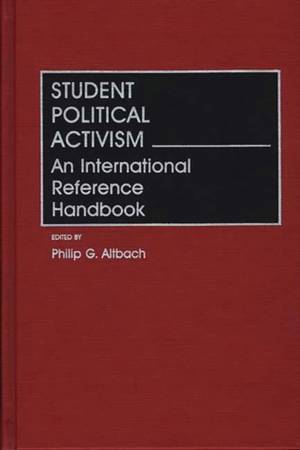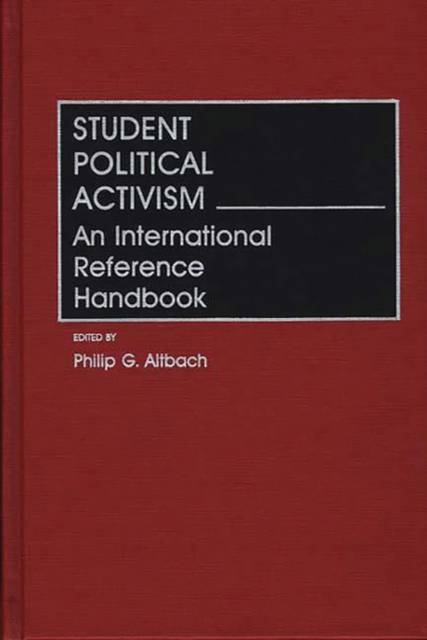
- Retrait gratuit dans votre magasin Club
- 7.000.000 titres dans notre catalogue
- Payer en toute sécurité
- Toujours un magasin près de chez vous
- Retrait gratuit dans votre magasin Club
- 7.000.0000 titres dans notre catalogue
- Payer en toute sécurité
- Toujours un magasin près de chez vous
Student Political Activism
An International Reference Handbook
Philip G Altbach
Livre relié | Anglais
140,95 €
+ 281 points
Description
This compilation of 29 country studies could not be more timely. Recent student unrest in El Salvador, Czechoslovakia, and West Germany, a national student forum held in Moscow, and China's Tiananmen Square student tragedy all suggest a worldwide upsurge in students' efforts to participate in political life. . . . Each chapter presents historical analyses of key events, with emphasis on the past three decades. . . . Altbach has assembled a strong international team in a landmark work. Choice
Providing a global perspective on student political activism in 29 countries, this reference work features in-depth essays by specialists who bring multidisciplinary insights to student movements, programs, and motivations and to the historical, political, social, and educational contexts in which these movements exist. Altbach defines student political activism and outlines the rationale behind this important collection of essays--why student political activism should be studied and who can benefit most from knowledge of this historically important force. He elaborates on how an understanding of the workings of student politics can benefit political leaders, members of the academic community, and the activists themselves. The historical role played by student political movements in the development of nationalism in Germany and in colonial nations in Asia and Africa is described, and the powerful university reform movements of Latin America are reviewed. Student activism is revealed to be a significant, perennial, and accepted factor in many Third World political arenas. However, in most parts of the world, student movements as a political force, whether right-wing, left-wing, liberal, or radical are characteristically sporadic but often very influential phenomena. The impossibility of a permanent revolution in the university is explained as are the sociological factors that tend to undermine sustained student movements. The impact and longevity of student movements depend to a certain extent, on the responses to activism by the mass media, by key social groups outside the universities, by the university authorities themselves, and by other extra-campus entities such as governments, and these factors are thoroughly investigated. Who Are the Activists considers activist leadership in a comparative context using available sociological research data to present a fascinating portrait of the students--their numbers, political and ideological characteristics, their major areas of study, and the socioeconomic backgrounds of their families of origin. United States student political activism is addressed in three separate chapters that cover the period from 1905 to 1960, the volatile 1960s, and the post-sixties, an era of transformation. Twenty-nine other essays survey activism in major countries in Africa, Asia, Europe, Latin America, and Canada. An important reference tool and the first compilation on the topic in a decade, Student Political Activism will be extremely useful to specialists in international relations, political science, comparative education, and higher education as well as to students, college and university administrators, and librarians.Spécifications
Parties prenantes
- Auteur(s) :
- Editeur:
Contenu
- Nombre de pages :
- 519
- Langue:
- Anglais
Caractéristiques
- EAN:
- 9780313260162
- Date de parution :
- 23-08-89
- Format:
- Livre relié
- Format numérique:
- Genaaid
- Dimensions :
- 156 mm x 234 mm
- Poids :
- 898 g

Les avis
Nous publions uniquement les avis qui respectent les conditions requises. Consultez nos conditions pour les avis.






